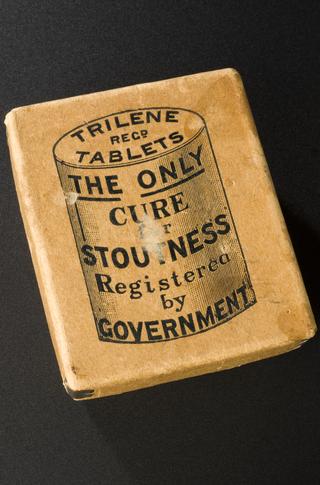
Glass bottle of cocaine eye drops




Glass bottle of cocaine eye drops, in poison bottle, full, with seal semi-intact. 100 mm x 30 mm, White label with red border reads, 'STANDARD BURGOYNE PHARMACEUTICALS/.../GUTTAE COCAINAE B.P.C. /.../Contains 0.5% w/v Cocain and 0.033% w/v Mercuric Chloride/ Directions - Apply the drops to the affected Eyeball by/ means of brush attached to cork.../.../BURGOYNE/BURBIDGES & CO LTD/LONDON E.' Manufactured by Burgoyne, Burbidges and Co., London, 1901 to 1930.
Cocaine was first demonstrated as a local anaesthetic in 1884 by Carl Koller, an Austrian eye surgeon and specialist working at the Vienna General Hospital. Other anaesthetic agents including ether and chloroform were used from the 1840s onwards but for general anaesthesia, which sends a person to sleep. Derived from the leaves of coca plants, cocaine was first isolated and named by Albert Niemann in 1860. After Koller’s demonstration, others started to experiment with cocaine injections to produce local anaesthesia – numbing an area of the body.
Due to cocaine’s addictive and harmful effects, stricter controls of it use began to be put in place following the international Opium Conventions at the Hague in 1912. During the First World War restrictions were placed on the possession cocaine that became law in with 1920 Dangerous Drugs Act.
Details
- Category:
- Materia Medica & Pharmacology
- Object Number:
- 1979-216
- Materials:
- glass, cocaine hydrochloride, paper (fibre product), cork, plastic (unidentified) and full
- type:
- bottle
- credit:
- Donated by C R Brown








